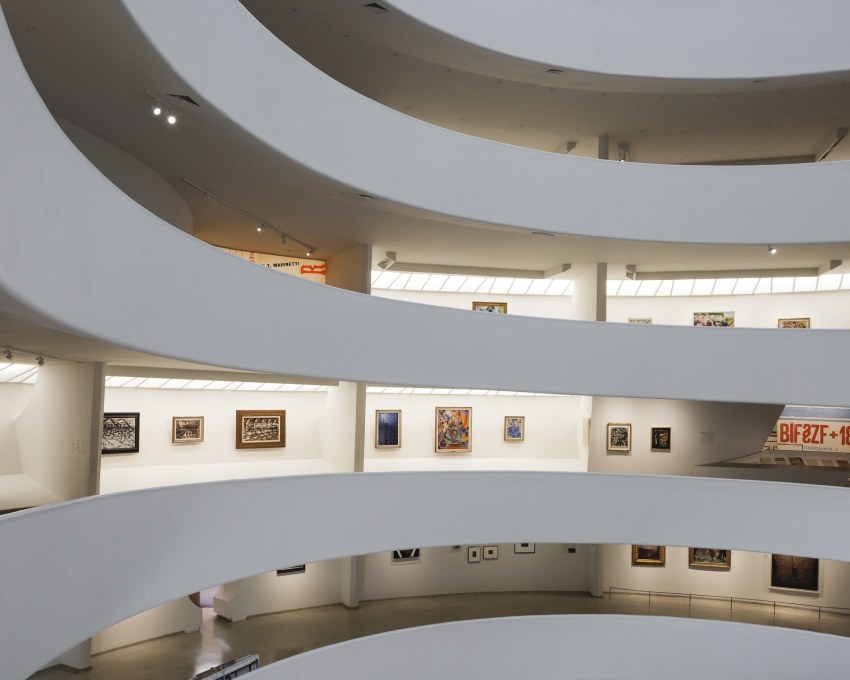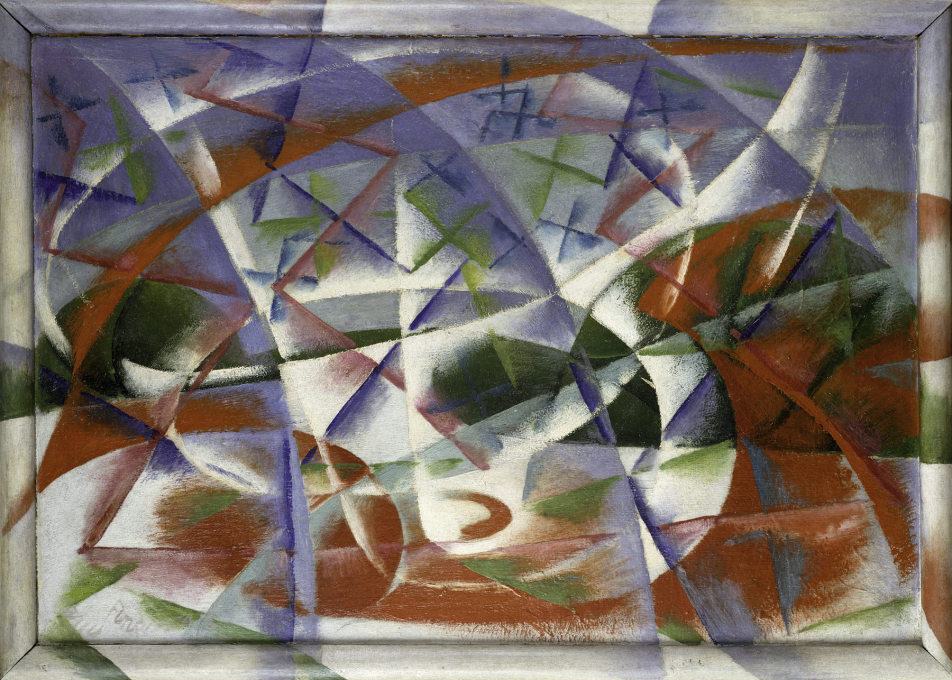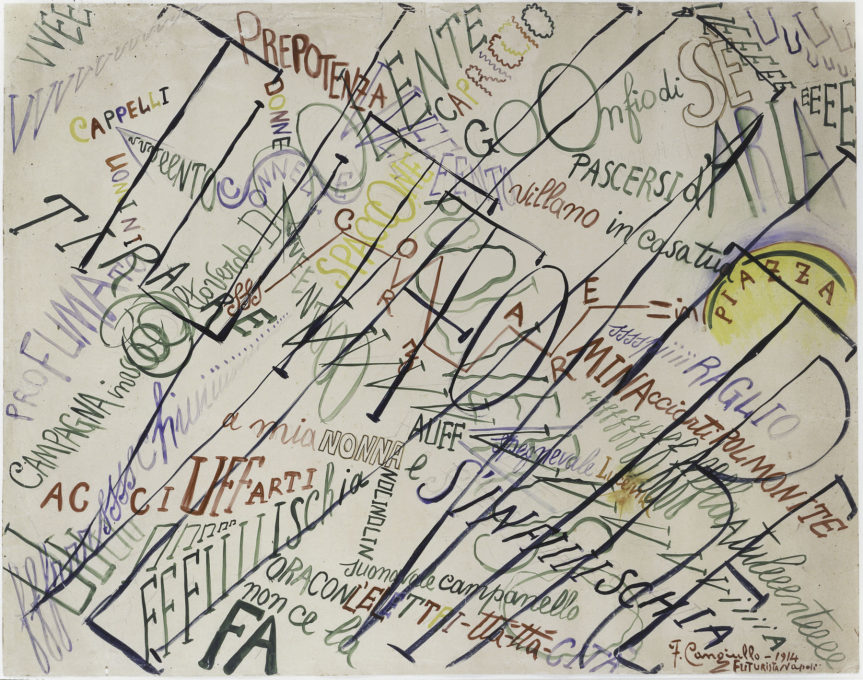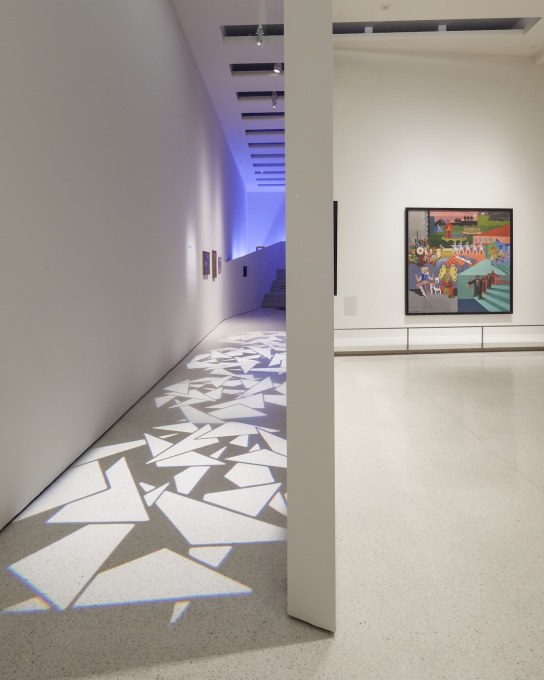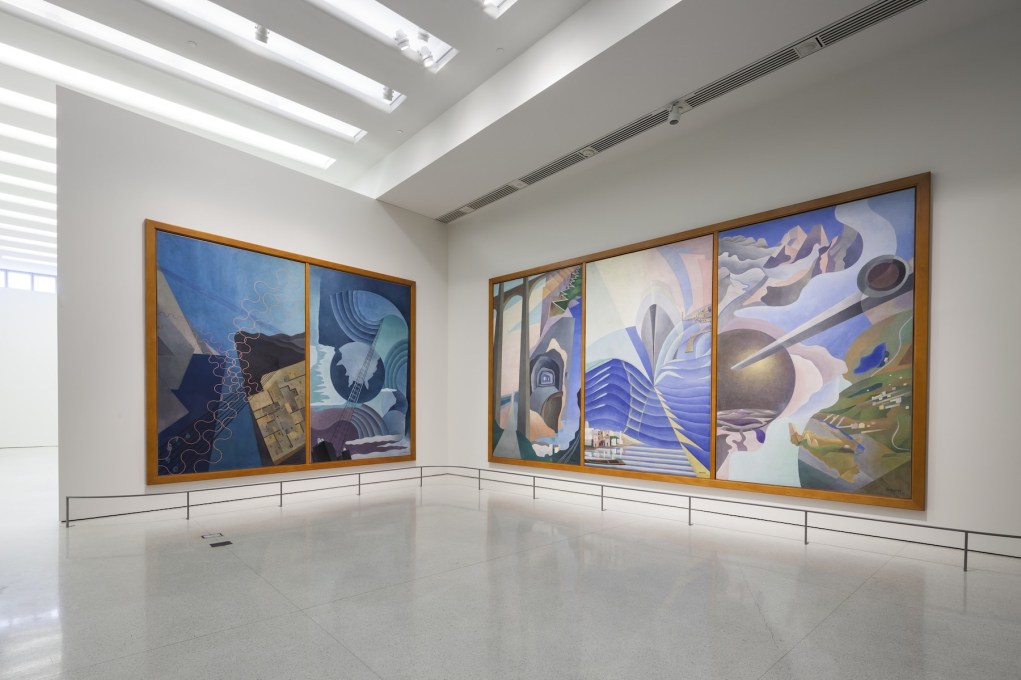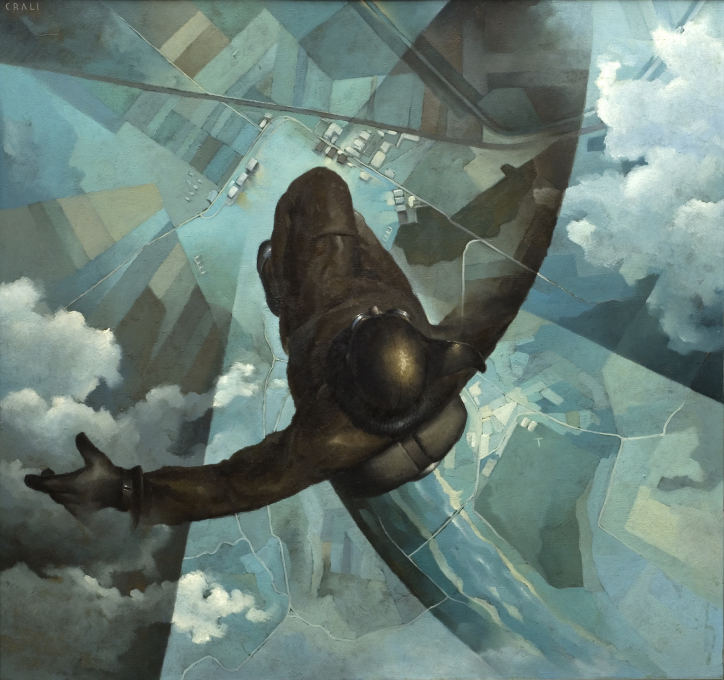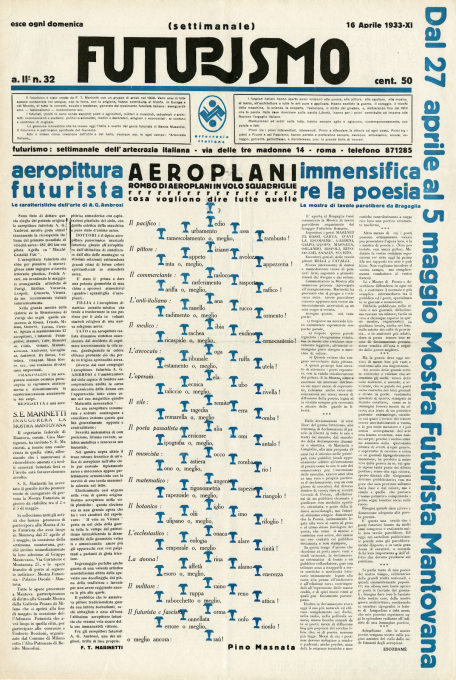All the contradictions of Italian Futurism as an artistic and social movement are on display in a huge new exhibition at the Guggenheim in New York. From its extraordinary dynamism and experimentation to its dodgy politics, Katrin Schamun assesses an exhibition that seems very at home in the spiralling void of the Frank Lloyd Wright’s Guggenheim.
What other modern art movement was as contradictory – and controversial – as Italian Futurism? It has accrued labels like Fascist, misogynist, and destructive – but at the same time the Futurists emphasised principles still lauded today, such as dynamics and speed, the beauty of movement, and an unconditional devotion to the latest technologies.
The artistic and social movement began in 1909 with Filippo Tommaso Marinetti’s Futurist Manifesto, which shocked the public with provocative phrases like: “We want to glorify war — the only cure for the world”. The aggressive tone and violent content caught media attention and Futurism became a powerful force in Modern Art, combining topics like violence, technology, youth and velocity. For Italian artists, Futurism represented a step toward a creative self-conscious, away from the cultural supremacy of ancient Rome – not to mention the Renaissance, with its static one-point perspective construction of space. Futurist artists experimented with a variety of artistic media and techniques to express fragmentation, simultaneity, collage and polymaterialism, altering the production and reception of art that has had repercussions until today.
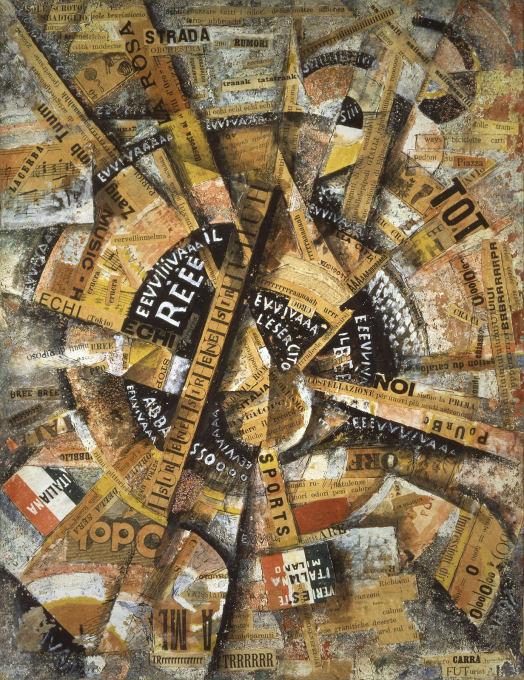
With over 350 works on display, the current exhibition Italian Futurism, 1909-1944: Reconstructing the Universe at New York’s Guggenheim Museum gives a vast overview of Futurism in all its contradictory aspects. Yet it achieves this without simplification, through its juxtaposition of writings and paintings, sculptures and ceramics, fashion, theatre, photography and film. Curator Vivien Greene considers both the well-known first phase of the movement (1909-1916) and the later post-war “Second Futurism”, which continued throughout the 1920s and 30s, when its artist members were increasingly sympathising with Mussolini’s ideals. The exhibition features iconic masterpieces, such as Marinetti’s original manifesto and Umberto Boccioni’s incredible sculpture Unique Forms of Continuity in Space (1913) – an image of which decorates the Italian 20-cent coin, a testament to the movement’s national importance. But lesser-known works are also on display, including some rather cute and colourful tableware and peculiar furniture and design objects.
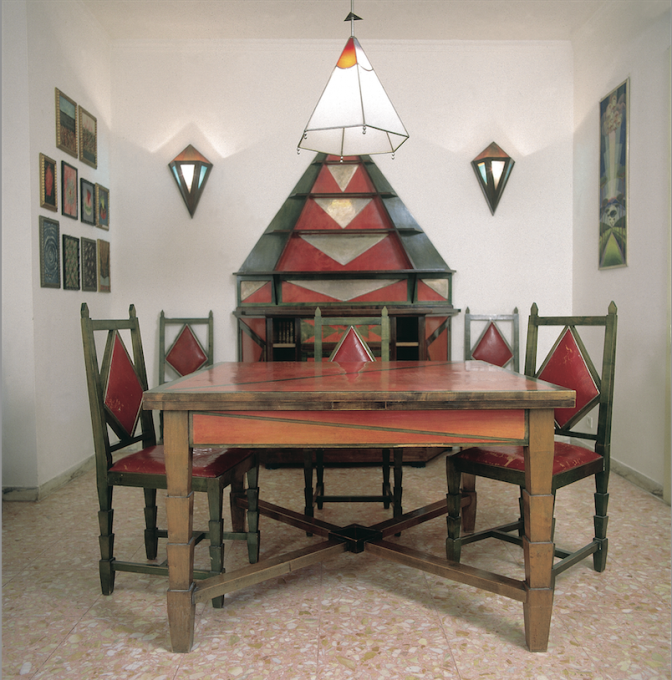
Entering the exhibition and ascending the museum’s spiral ramp, one passes paintings, texts and collages that attempt to formally express speed, sound, velocity, and movement. Continuing to circle the building, one encounters more multimedia works: photos, films, installations, and stage designs, like Giacomo Balla’s impressive stage set for Igor Stavinsky’s Fireworks. Much of the artwork feels incredibly current – a light show in a side gallery could have been created by a contemporary VJ. In the middle of the colourful, strange, beautiful and terrifying fireworks of Futurism, one suddenly finds oneself in front of Marinetti’s most enchanting work: Sudan-Paris from 1920, an assembly mixing sandpaper, silk, velvet, sponge and feathers among other materials.
If the experience feels a bit over-the-top, the curator’s intentions have been achieved. After all, the Futurists aimed at nothing less than total reconstruction of the universe. Greene points out that the Guggenheim museum building itself is based on some essential Futurist notions, and that Frank Lloyd Wright’s architectural masterpiece should itself be considered part of the exhibition. Both Italian Futurism and Wright's building aimed to augment perceptions of space – and the museum’s trademark spiral proves a successful framework for the works, as clear formal experiments in dynamics and movement – which emphasising the striking aesthetics, regardless of the political implications of the artwork.
– Katrin Schamun is researching and writing on spatial strategies in architecture and film. Currently she is a visiting scholar and instructor at Harvard University.
Guggenheim curator Vivien Greene describes the concept behind the show and the enduring relevance of Italian Futurism. (Video: The Economist)
Italian Futurism 1909-1944: Reconstructing the Universe
Until September 1, 2014
Solomon R. Guggenheim Museum
1071 5th Avenue, New York, NY 10128




